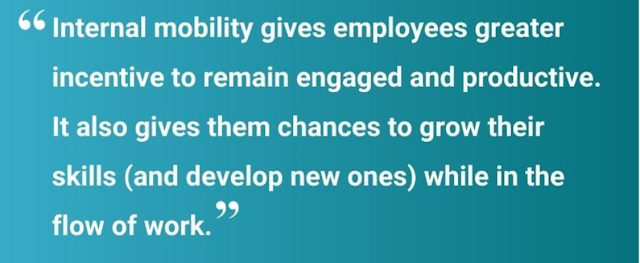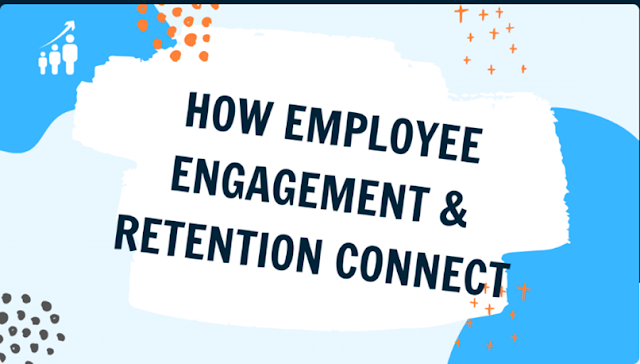Keep growing with comprehensive Learning and Development for inspire a better success!!!
"Learning and development is a systematic process to enhance
an employee’s skills, knowledge, and competency, resulting in better
performance in a work setting. Specifically, learning is concerned with the
acquisition of knowledge, skills, and attitudes. Development is the broadening
and deepening of knowledge in line with one’s development goals."
The goal of learning and development is to develop or change
the behavior of individuals or groups for the better, sharing knowledge and
insights that enable them to do their work better, or cultivate attitudes that
help them perform better (Lievens, 2011).
Learning, training, and development are often used
interchangeably. However, there are subtle differences between these concepts,
which are shown in the table below.
|
Concept |
Description |
|
Learning |
The acquisition of knowledge,
skills, or attitudes through experience, study, or teaching. Training,
development, and education all involve learning. |
|
Training |
Training is aimed at
teaching immediately applicable knowledge, skills, and attitudes to be used
in a specific job. Training may focus on delivering better performance in the
current role or to overcome future changes. |
|
Development |
Development is aimed
at the long term. It revolves around the broadening or deepening of
knowledge. This has to fit within one’s personal development goals and the
(future) goals of the organization. Development usually happens voluntarily. |
|
Education |
Education is a more
formal way to broaden one’s knowledge. Education is often non-specific and
applicable for a long time and is especially relevant when a person has
little experience in a certain area. |
Table 01
Learning and
development strategies
The most important thing HR can give an employer is a company
that wins in the marketplace. The question is, what are the learning and
development strategies that help to do this?
Based on this model, we identify four phases required to
create an effective learning and development process.
1.
An
analysis of training needs (starting situation)
2.
Specification
of learning objectives
3. Design of training content and method and evaluation
An effective learning and development strategy relies on a
process in which one continually moves through these four phases. Let’s examine
them one by one.
Phase 1. Analysis of training needs
The first step is an analysis of the starting situations and
prior knowledge to identify training needs. We don’t want employees to learn
for the sake of learning. Otherwise, we would be happy to send them on a
pottery course. Instead, we want employees to acquire new knowledge, skills,
and attitudes that are relevant for their (future) function. This way learning
is a way to create new business capabilities.
Phase 2. Specification of learning objectives
The training needs need to be translated into learning
objectives. These objectives serve as the starting point for the design of the
training’s content and method.
Phase 3. Design of the training material and
method
In this phase, the teaching material and learning method are
determined. This is where the choices about the training material, teaching
method, and learning activities are made. This is often done together with an
external trainer or training provider, and ideally also with involvement from
the trainee.
Phase 4. Monitoring and evaluation
The last phase of the learning process is monitoring and evaluation. In this phase, the learning objectives are evaluated and learning effectiveness is assessed. A very useful model for evaluating learning effectiveness is Bloom’s taxonomy, which we will explain later in this article.
We already mentioned some methods of learning – but there are
many more. We will list several of them below. However, this list is far from
comprehensive.
Methods of learning
We already mentioned some methods of learning – but there are many more. We will list several of them below. However, this list is far from comprehensive.
Benefits of Learning and development
Clip 01
Enhanced Skillset: Engaging in learning and development
opportunities equips individuals with new skills and knowledge, enabling them
to excel in their roles and stay up-to-date with industry trends.
Increased
Motivation and Engagement: Providing opportunities for growth and skill improvement
fosters a sense of purpose and commitment among employees, leading to higher
job satisfaction and motivation.
Improved Performance: Continuous learning enhances
performance by enabling individuals to apply new techniques, strategies, and
insights to their tasks, resulting in increased productivity and efficiency.
Talent Retention: Organizations that invest in
employee learning and development demonstrate a commitment to their employees'
growth, which in turn boosts retention rates and reduces turnover.
Adaptability and
Innovation: Learning
and development encourage creativity and innovation, enabling individuals to
adapt to changing circumstances and contribute fresh ideas to solve challenges
in the workplace.
Conclusion
In conclusion, learning and development are essential
components for personal and professional growth. Through continuous learning,
individuals can acquire new knowledge, skills, and perspectives that empower
them to adapt and excel in a rapidly changing world. Furthermore, investing in
employee development not only enhances job performance but also boosts morale
and engagement within organizations. Lifelong learning fosters innovation and
creativity, driving progress across industries and society as a whole.
Embracing a commitment to ongoing learning and development is paramount for
both individual success and collective advancement.
References
1. Chapter 1. (2005). Introduction to Learning and Development. Retrieved February 11, 2020 from blackwellpublishing.com
2. Dam, N.V. (Ed.). (n.d.). Elevating Learning and Development. Retrieved February 12, 2020 from mckinsey.com
4. Learning and Development Strategy.
(n.d.). Retrieved February 11, 2020 from nscpolteksby.ac.id
5. Eraut, M J, Alderton, G, Cole, G and
Senker, P (1998) Development of Knowledge and Skills in Employment, Economic
and Social Research Council, London
6. Learning & Development Strategies(2017)
Available at https://www.aihr.com/blog/learning-and-development/
Accessed on 14th July 2017.
7. Comprehensive learning &
development (2014) ,Available at https://www.aihr.com/blog/learning-and-development/






Learning creates a huge skill enhancement , boost in motivation , higher performance level, self confidence of individuals in the company. Deploying right learning mechanism will add values to the organization.
ReplyDeleteA Best analyze, provides a comprehensive overview of learning and development, emphasizing the importance of enhancing employees' skills and knowledge for better performance.
ReplyDeleteA good analysis of how LND is an essential part of personal and professional growth and how it can benefit an organization.
ReplyDeleteOrganizations should encourage employees continuous learning, must provide them resources for skill development, they can motivate employees continuous learning by rewarding them with incentives.
ReplyDelete